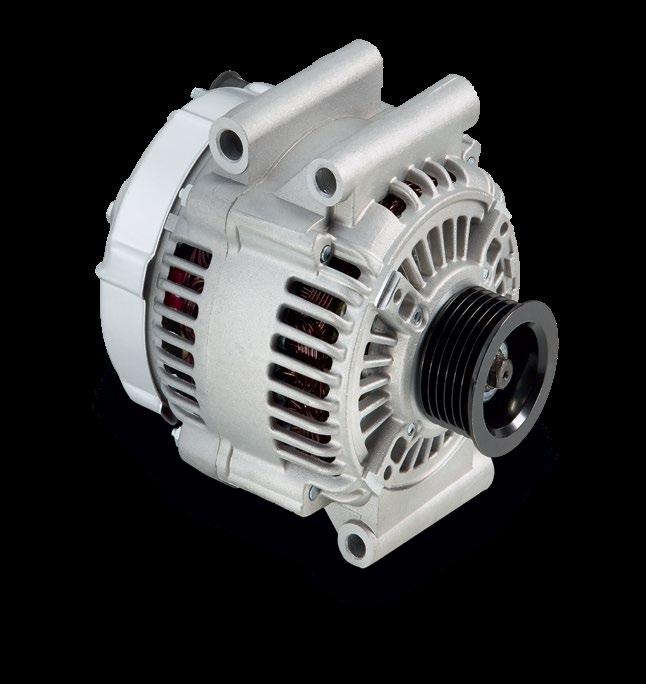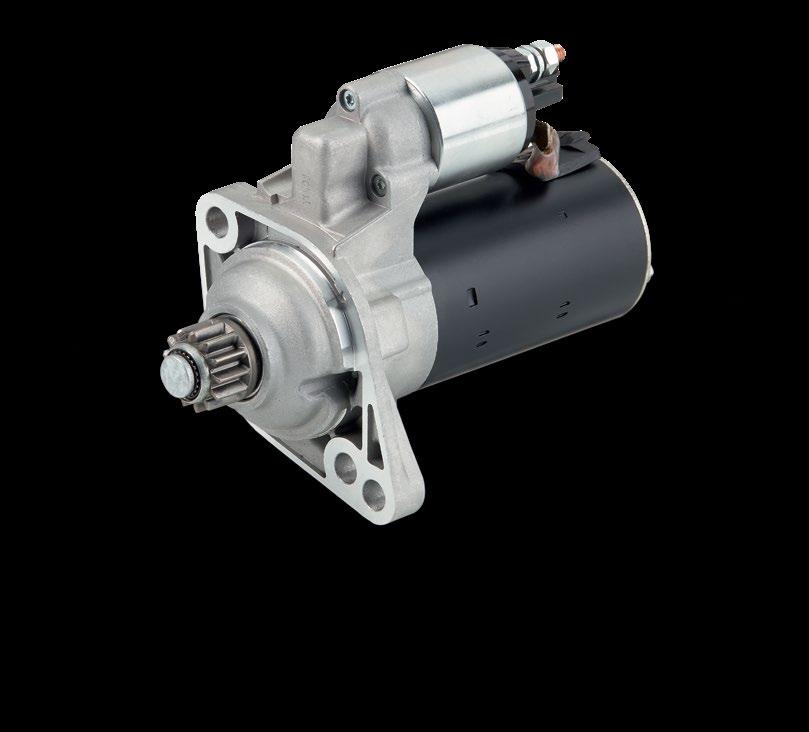ELECTRICS FAULT DIAGNOSIS
ALTERNATORS
Today’s modern alternators are often referred to as ’COM’, ‘LIN’ units - they respond to commands and communicate with the vehicle’s computer/ECU/PCM to shut down, wake up, increase output, decrease output, and more.
WHAT IS COMMONLY MISDIAGNOSED AS ALTERNATOR FAILURE?
• Insecure cables and connections, or broken wires.
• A lack of communication between the alternator and the vehicle’s computer, often caused by broken or corroded wiring, especially COM or signal wires.
• Poor battery condition or parasitic load, such as a broken boot or glove box light switch, resulting in a permanently illuminated light when the engine is off.
• Excessive current draw from external sources such as accessory overload.
• Engine management faults. For example, if the alternator is ECU controlled, Ford Smart Charge can be problematic.
• Oil ingress.
SMART CHARGE (LIN, COM TERMINALS)
• Testing a smart charge unit will show fluctuation in voltage, as the required current is drawn from the battery to the ECU, which asks the alternator how much voltage it needs to charge the battery.
• The accurate testing of a smart charge unit requires the correct test equipment.
• A thorough test of the battery should always be performed before fitting a new alternator.
• The ECU must have the fault code cleared before the alternator is connected.
DO I HAVE A SMART ALTERNATOR?
Steps to determine if your vehicle is fitted with a traditional or a smart alternator
1. Locate your vehicle’s battery.
2. Ensure all lights, fans, and radios are switched off, then start your engine.
3. Take a voltage reading using a voltmeter and note the result.
4. Leave the engine running for 5-10 minutes and then take a second voltage reading of the battery.
Traditional Alternator: If your first and second readings are the same, around 14.4V, you have a traditional alternator.
Smart Alternator: If your first reading is around 14.4V but the second reading is lower (around 12.5V – 13.5V), you have a smart alternator.
There are many variations in alternators. Some look identical but have a different plug configuration. Always compare the old and new unit before fitting, making sure the pulley is correctly aligned.
Always cross-reference the old unit number from the original alternator to make sure the correct replacement is being fitted.
THE CHARGING AND STARTING SYSTEM





